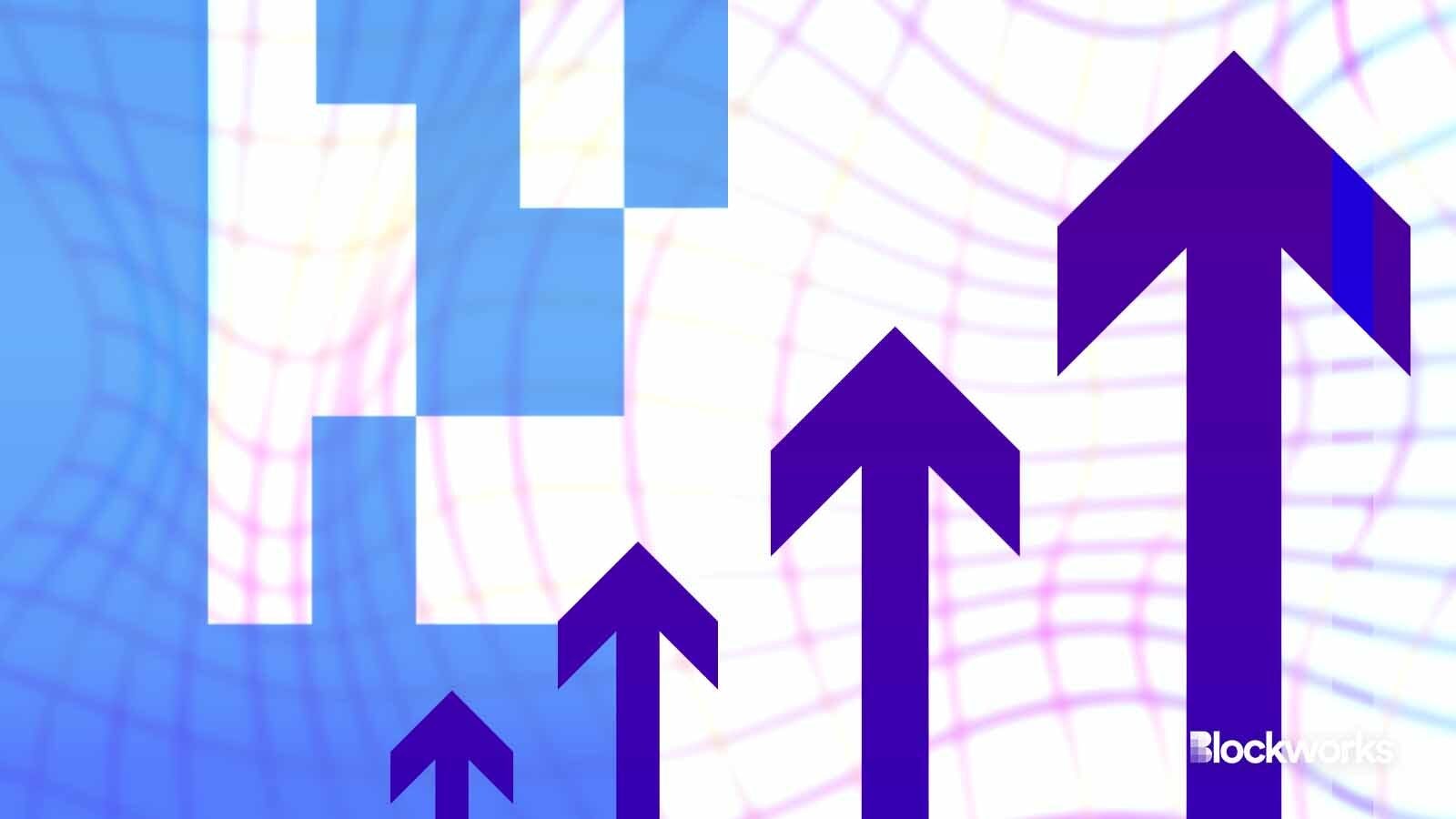EigenLayer TVL soars after deposit cap removed
EigenLayer’s TVL almost doubled in the past 24 hours, according to information available on DeFiLlama

EigenLayer and Adobe Stock modified by Blockworks
Following its decision to temporarily remove total value locked (TVL) caps for all tokens, restaking protocol EigenLayer has seen deposits on its network soar.
According to information available on DeFiLlama, EigenLayer’s TVL almost doubled in the past 24 hours, from $2.16 billion to $3.84 billion at the time of writing.
Unlike traditional proof-of-stake blockchains that issue their own tokens which validators can then use to secure the network, EigenLayer’s security model relies on an open marketplace, where validators can choose to opt into Actively Validated Services (AVSs) of their choice.
This means that users can participate in securing EigenLayer by depositing their already natively staked ETH or liquid staked ETH into the network’s smart contracts, subjecting them to slashing conditions for extra rewards.
Validators also have the option to restake liquid provision tokens — this not only allows them to extend economic security but also enables users to earn additional rewards on their tokens that may be sitting idly in DeFi protocols.
Read More: EigenLayer deploys restaking protocol on Ethereum mainnet
Caps on TVL were introduced on EigenLayer as a method to promote decentralization and prevent one single token from dominating and engaging in harmful activities.
TVL caps have been temporarily lifted between Feb. 5 and Feb. 9, with plans to lift the caps permanently in the near future. This decision will come hand in hand with limiting governance participation for any liquid-staked token or liquid-staked token to 33%.
There are currently 10 active liquid staking protocols on EigenLayer, according to DeFiLlama. The current largest liquid staking protocol is ether.fi, which has a TVL of $785 million, Puffer Finance comes in second with a TVL of $476.12 million and Kelp DAO follows closely behind with a TVL of $325.86 million.
Get the news in your inbox. Explore Blockworks newsletters:
- The Breakdown: Decoding crypto and the markets. Daily.
- 0xResearch: Alpha in your inbox. Think like an analyst.






